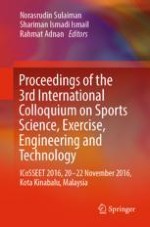This proceedings volume explores a range of sports-related topics, including sports science, exercise, sports engineering and technology, in contributions prepared by respected experts and presented at the 3rd International Colloquium on Sports Science, Exercise, Engineering and Technology (ICoSSEET2016).
The goal of the conference was to bring together researchers and practitioners from academia and industry to address current challenges in various sports-related areas, and to establish vital new collaborations. The topics covered can be primarily divided into (1) Sports Science and Exercise, (2) Sports Engineering and Technology Application, and (3) Sports Industry and Management.
